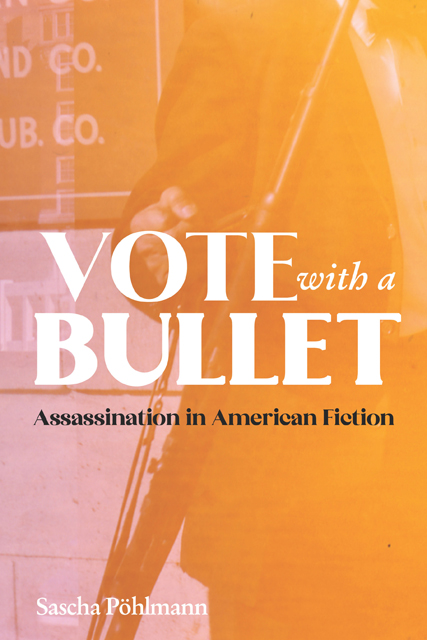Book contents
- Frontmatter
- Dedication
- Contents
- Introduction: The Individual and Society
- 1 The Princess Casamassima (1886)
- 2 The Assassination Bureau, Ltd. (1910/63)
- 3 All the King’s Men (1946)
- 4 Solar Lottery (1955)
- 5 The Manchurian Candidate (1959)
- 6 The Parallax View (1970)
- 7 Libra (1988)
- 8 The Dead Zone (1979)
- 9 11/22/63 (2011)
- 10 Big If (2002)
- 11 Checkpoint (2004)
- 12 The Good Father (2012)
- Conclusion
- Works Cited
- Index
1 - The Princess Casamassima (1886)
Published online by Cambridge University Press: 14 January 2023
- Frontmatter
- Dedication
- Contents
- Introduction: The Individual and Society
- 1 The Princess Casamassima (1886)
- 2 The Assassination Bureau, Ltd. (1910/63)
- 3 All the King’s Men (1946)
- 4 Solar Lottery (1955)
- 5 The Manchurian Candidate (1959)
- 6 The Parallax View (1970)
- 7 Libra (1988)
- 8 The Dead Zone (1979)
- 9 11/22/63 (2011)
- 10 Big If (2002)
- 11 Checkpoint (2004)
- 12 The Good Father (2012)
- Conclusion
- Works Cited
- Index
Summary
As stated above, I will discuss The Princess Casamassima not as an original text that inaugurates the genre of the assassination novel but as its most prominent precursor. The plot revolves around Hyacinth Robinson, a London bookbinder who gets involved in both the radical political movement of his time and in the world of the aristocracy that grouping seeks to disenfranchise. Hyacinth was raised in dire social conditions by a seamstress after his mother, who was of low social standing and reputation, murdered his father, an English lord (although Hyacinth grows up not knowing about any of this). In the heat of the moment during a meeting with his fellow would-be revolutionaries, he makes a vow to assassinate a public figure for the sake of their ill-defined cause. However, he realizes rather quickly that this commitment is at odds with his appreciation for the positive aspects of the aristocracy. This conflict is paradoxically embodied by the Princess Casamassima, an aristocrat who nevertheless considers herself a revolutionary, though perhaps more out of boredom than actual conviction. Unable to resolve his personal dilemma any other way, Hyacinth escapes it by committing suicide in the end.
Despite its setting and its political concern with the aristocracy, James’s novel is in many ways exemplary of how American fiction, through the lens of assassination, negotiates the tension between individual and society, and yet the novel deviates sufficiently from the patterns that characterize assassination fiction proper (i.e., from All the King’s Men onward) as much as it exhibits, anticipates, and prepares these patterns. One might speculate about why it is the realism of the late nineteenth century that would provide such a strong beginning for assassination fiction: its concern for subjectivities embedded in particular social environments is surely a factor in this, as well as its aesthetics of reality effects that construct plausible and coherent worlds in the laboratory of fiction and that explore how individuals may act in different contextual constellations. This realist focus on the individual agents in their social situation provides the proper literary mode for exploring this most extreme of political interactions between individual and society, and while the violent theme seems more appropriate to the eagerness of naturalism to explore the breakdown of the habit of civilization, realism may provide just the right balance between a belief in individual agency and freedom, on the one hand, and social determinism and materialism, on the other, to make the issue of such an intervention a pertinent one.
- Type
- Chapter
- Information
- Vote with a BulletAssassination in American Fiction, pp. 21 - 46Publisher: Boydell & BrewerPrint publication year: 2021

